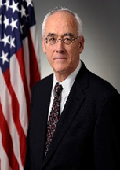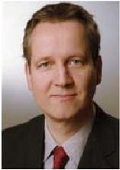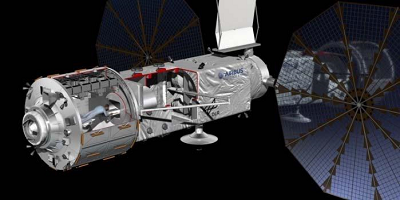Day 1 :
Keynote Forum
Benjamin K. Malphrus
Morehead State University
USA
Keynote: A New Era of Planetary Exploration with Small Satellite Platforms
Time : 09:05-09:45

Biography:
Benjamin K. Malphrus is Professor of Space Science at Morehead State University where he also directs the Space Science Center. He has served on the scientific staff of the National Radio Astronomy Observatory, NASA’s Wallops Flight Facility, the University of South Carolina and West Virginia University. He served as Principle Investigator (PI) on nanosatellite missions including KySat-2, the Cosmic X-Ray Background Nanosatellite (CXBN), and CXBN-2, and has had various roles on other smallsat missions. He is currently PI on the Lunar IceCube Mission- a $15 M NASA project designed to investigate the transport physics of water ice on the Moon. He has published papers on topics ranging from extragalactic astrophysics to instrumentation in radio astronomy, to nanosatellite systems development and was awarded over $18 million R&D grant funding. In the late 1990s, he developed a theory of galaxy formation that has gained wide acceptance among the astronomical community.
Abstract:
A new era of solar system exploration is being ushered in by NASA’s Exploration Mission-1 (EM-1). EM-1 is the maiden voyage of NASA’s Space Launch System (SLS), which when it launches in 2018, will be the most powerful rocket ever built. SLS will support human exploration beyond LEO and will also serve as a platform to launch small satellites as secondary payloads to Earth escape. NASA has selected 13 secondary payloads, to launch on EM-1, all 6U CubeSats that will travel to planetary destinations to perform science investigations that address NASA Strategic Knowledge Gaps. CubeSats are “nanosatellite” class research spacecraft that are built in standardized units. The standard unit (U), is 10 cm × 10 cm × 11 cm, and has a mass of 1.33 kilograms per U. Four lunar EM-1 CubeSats, Lunar Flashlight, Lunar IceCube, LunaH-Map and Skyfire will work together to investigate water ice and other volatiles on the lunar surface. NEA-Scout will rendezvous with a near Earth asteroid to investigate its composition, geology, volatile resources and orbit dynamics. Biosentinel will investigate the effect of the deep space environment on biological systems. The manifest will include two JAXA CubeSats, EQUULEUS and OMOTENASHI, an ESA and Italian Space Agency CubeSat- ArgoMoon, and two CubeSats to be selected from NASA’s CubQuest challenge. A variety of enabling technologies including electric propulsion, solar sail technologies, miniature science instruments, radiation tolerant processors, precise attitude control systems, compact ranging transponders and high data rate communication systems will be demonstrated by these missions. Innovative low energy manifold trajectories will be employed to allow the spacecraft to travel to deep space destinations with limited propellant mass and constrained delta-v. The 13 secondary payloads to be deployed on EM-1, including Lunar IceCube, will usher in a new era of solar system exploration with small satellite platforms.
Keynote Forum
Kent Miller
Air Force Office of Scientific Research
USA
Keynote: Space Research at AFOSR
Time : 09:45-10:25

Biography:
Kent L. Miller is an International Program Officer at the Air Force Office of Scientific Research (AFOSR). He received his BS in Physics from Utah State University and his MS and PhD in Physics from the University of Illinois at Urbana-Champaign. His doctoral dissertation examined small-scale ionospheric structures using data from sounding rockets and incoherent scatter radar. He was a research physicist at the Lockheed Palo Alto Research Laboratory and a Research Professor at Utah State University. He was advisor to the “Get-Away-Special” program at Utah State and the University NanoSatellite Program at AFOSR. He joined AFOSR in 1996 and has been the program office for space science and SSA in the Arlington office and at EOARD in London. He is a Senior Executive Fellow of the Kennedy School of Government, Harvard University and a Fellow of the Air Force Research Laboratory.
Abstract:
International cooperation in space research and in space education is the source of opportunities that are of mutual benefit internationally. We describe opportunities for the United States military to promote international cooperation in research and to cooperatively offer graduate space education to overseas partner nations.
The mission of the International Office of the Air Force Office of Scientific Research (AFOSR) includes bridging and building mutually beneficial relationships between scientists overseas and scientists in the United States that will result in the acceleration of S&T achievement. Program officers at AFOSR discover, shape, and champion basic science that profoundly impacts the future US Air Force. In doing so, they also impact civilian science. International program officers have the additional responsibility of acting as liaison officers for all programs of the Air Force Research Laboratory to the international science community. Space technology research seeks new concepts for space instrumentation. Research related to space situational awareness seeks better understanding of astrodynamics and of the observation and tracking of space objects. Space weather research is focused on the understanding of the space environment with a goal to enable and extend operational forecasting.

The AFOSR and the Air Force Institute of Technology (AFIT) have teamed to sponsor newly developed space education programs offered by faculty from the United States Naval Postgraduate School’s Graduate School of Engineering and Applied Science and AFIT’s School of Strategic Force Studies. An initial “Introductory Space” course has been taught in Santiago, Chile; while both Columbia and Brazil have expressed interest to be the next participants. The introductory course allows the students to ascertain their readiness to study at the graduate-level. Success at the introductory course permits the students to proceed into a graduate certificate, followed by a master’s degree using distance learning technologies.
Keynote Forum
O. Romberg
German Aerospace Center DLR
Germany
Keynote: Postâ€ISS Concept for 2025 and Beyond
Time : 10:45-11:25

Biography:
Oliver Romberg studied Mechanical Engineering with specialization in Mechanics, performed his phD at the Institute for Mechanics of the University of Hannover in 1998 and worked since then in the field of Space Technology. In the year 1998 he started in the company OHB System in Bremen, Germany as Systems Engineer, Project Manager and later as deputy department head. In parallel he gave lectures in Mechanics at the University of Applied Science in Bremen. Since 2007 Dr. Romberg works as head of the DLR department System Analysis Space Segment for the German Aerospace Center. As assistant professor he gives lectures in Systems and Concurrent Engineering at the University of Bremen.
Abstract:
The International Space Station (ISS) demonstrates successful international cooperation between many partners regarding engineering as well as programmatic aspects. There are more and more ideas in the development of new markets by shifting responsibilities to private entities and broadening research disciplines, demanding faster access by users and including new launcher and experiment facilitator companies. A review of worldwide activities shows that all spacefaring nations are developing their individual programs for the time after ISS . Europe is interested in LEO and human spaceflight as discussed by the ISECG, depending on funding commitments. ISS follow-on activities should comprise clear scientific and technological objectives combined with commercial application and the long term view on space exploration. This includes key competences like robotics, internal and external space structures, module/facility and experiment operations as well as supply systems. Based on Concurrent Engineering (CE) processes, DLR started to investigate future low cost options by evaluating various LEO infrastructure concepts including opportunities for national realization and international cooperation based on feasible budgets. Using the Concurrent Engineering Facility (CEF) of DLR Bremen, scientists and users from various disciplines are involved in assessing the feasibility of various Post-ISS options. Resulting payloads are based on Mir and ISS experience with respect to future scientific and technological research questions. Further, together with US and European industry, NASA and ESA astronauts, operation specialists, current ISS users and scientists, DLR conducted extensive CE studies for Post-ISS concepts. This work converged into a Phase A design called Orbital -Hub based on a small low cost manned LEO platform including Free Flyer. The first flying hardware components could be realised in the frame of moderate budgets in the next eight years. The Orbital-Hub would guarantee a smooth transition between ISS and further space activities beyond LEO and would represent an important step towards long term human space exploration.

